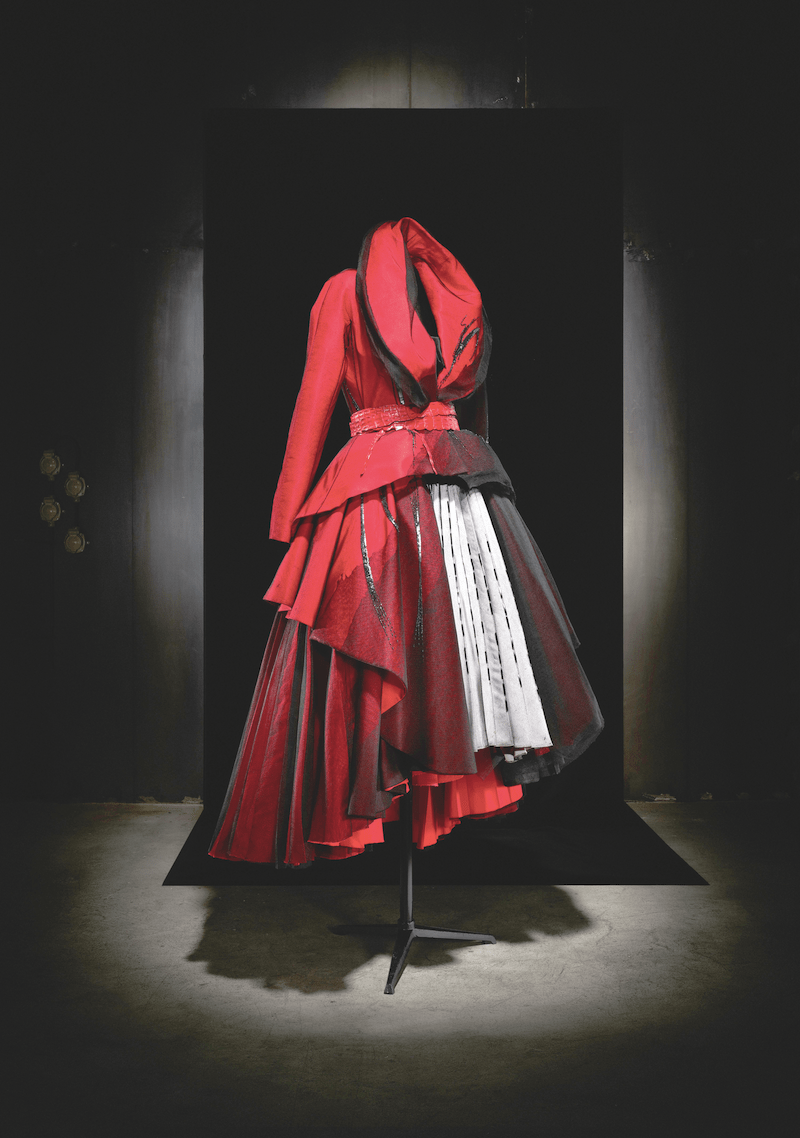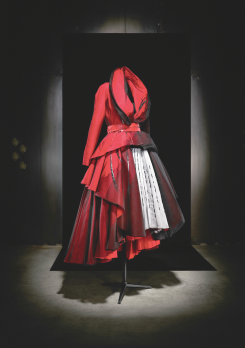While the Royal Ontario Museum might sometimes seem like the exclusive domain of grade school students and dinosaur enthusiasts, the museum’s latest exhibition, ambiguously titled BIG, is sure to strike a chord with the sartorially-inclined. This innovate new exhibit uses fashion as a means of bridging the gap between antiquity and modernity.
BIG is relatively (and ironically) small in size, showcasing only a small portion of the rom’s extensive costume collection. A curatorial team handpicked the exhibitions’ 40 pieces from the rom’s vast assortment of costumes and textiles. Heading this team was University of Toronto faculty member Dr. Alexandra Palmer, who is also the Nora E. Vaughn Fashion Costume Senior Curator at the rom.
I was impressed with how well Palmer and her two colleagues, associate curator Dr. Sarah Fee and assistant curator Anu Liivandi, organized an exhibition that includes artifacts from a variety of different time periods and cultures. A Peruvian feather tunic from approximately 1,000 bc is featured, along with an evening gown from Chinese-American designer Vivienne Tam’s 2011 fall/winter collection. An African cloth embroidered by clerics is paired with a masterpiece by the late Alexander McQueen, Britain’s iconic fashion maverick. What makes this exhibition “big” is its diversity of clothing styles, from a wide range of nations and generations.
Many new acquisitions are showcased in BIG, including the exhibit’s feature item, “Passage # 5,” a Christian Dior Haute Couture dress that was commissioned by the rom. John Galliano designed the dress prior to the scandal surrounding his allegedly anti-Semitic slurs.
Passage # 5 was the first item that I encountered as I entered the exhibition, and I was immediately taken aback by its theatricality. Next to the dress, a documentary set to dramatic music was playing. The movie is short in duration, but fascinating to watch; it reveals how many layers of tulle and silk were woven together to form this showstopper of a frock. As the granddaughter of a seamstress, I felt both sentimental and amazed at the artistry devoted to a single dress. Passage # 5 and its accompanying documentary truly set the stage for the works of incredible craftsmanship that BIG has to offer.
As I proceeded through the Patricia Harris Gallery of Textiles and Costume, my admiration for the artisans grew. Large textiles, each with a flare for the dramatic, are hung high above the gallery floor. Some of the ceilings in the gallery reach an impressive height of 13 metres, making this the perfect setting for a grandiose display. Floral motifs run rampant through the suspended fabrics, particularly in the textiles woven during the early 1920s. This display is sure to please any fashion enthusiasts who have had their eye on the floral trends that are currently dominating runways. Another item sure to resonate with today’s fashionistas is the Margiela dress from the turn of the millennium; the oversized style of this dress has yet to fall out of vogue.
During my visit to the gallery, I was most moved by the elaborately decorated “lotus buds,” which are on display behind plates of glass. Lotus buds were the small shoes worn by Chinese girls and women until the 20th century. Tightly bound by the shoes’ decorative fabric, girls’ feet remained child-sized throughout their adult life.
While perusing the museum’s collection of beautiful, but probably very painful, Chinese footwear, I realized that time and time again, I too find myself squeezing into uncomfortable shoes for the sake of “fashion.” It occurred to me that ancient Chinese mentalities towards aesthetics remain persistent today, albeit in a far less extreme form. Perhaps, as BIG’s unique collection suggests, the gulf between past and present is not so entirely vast.



